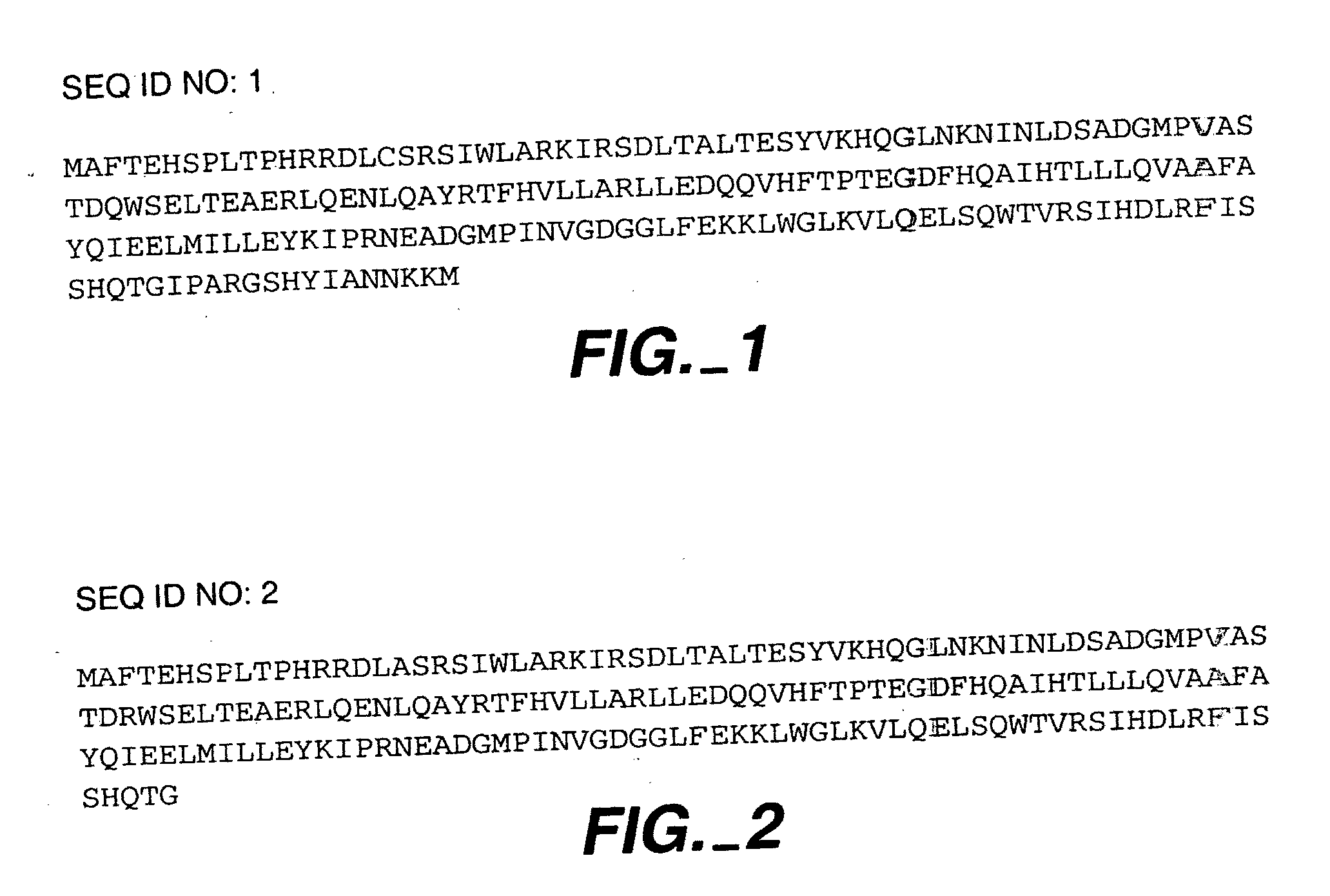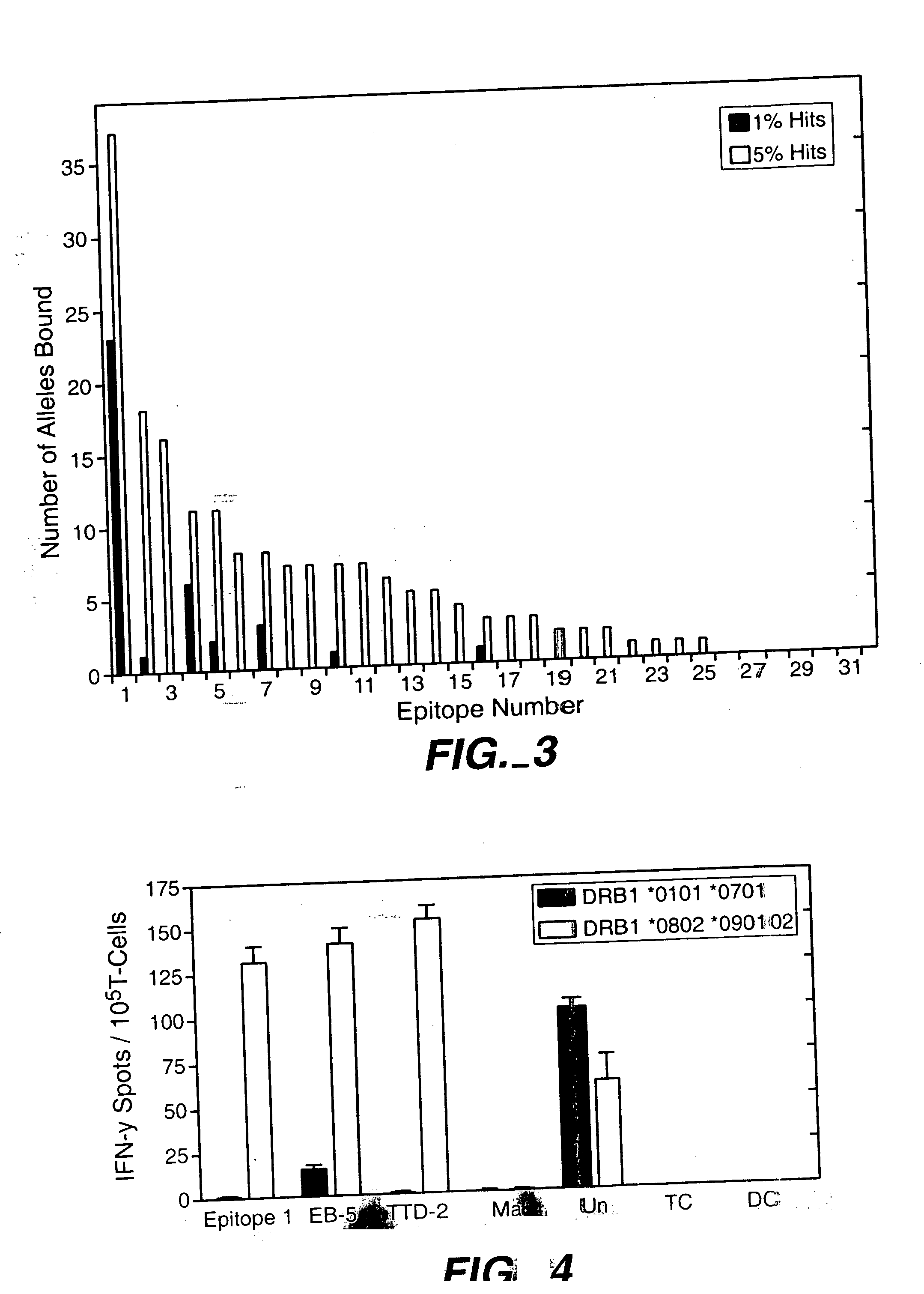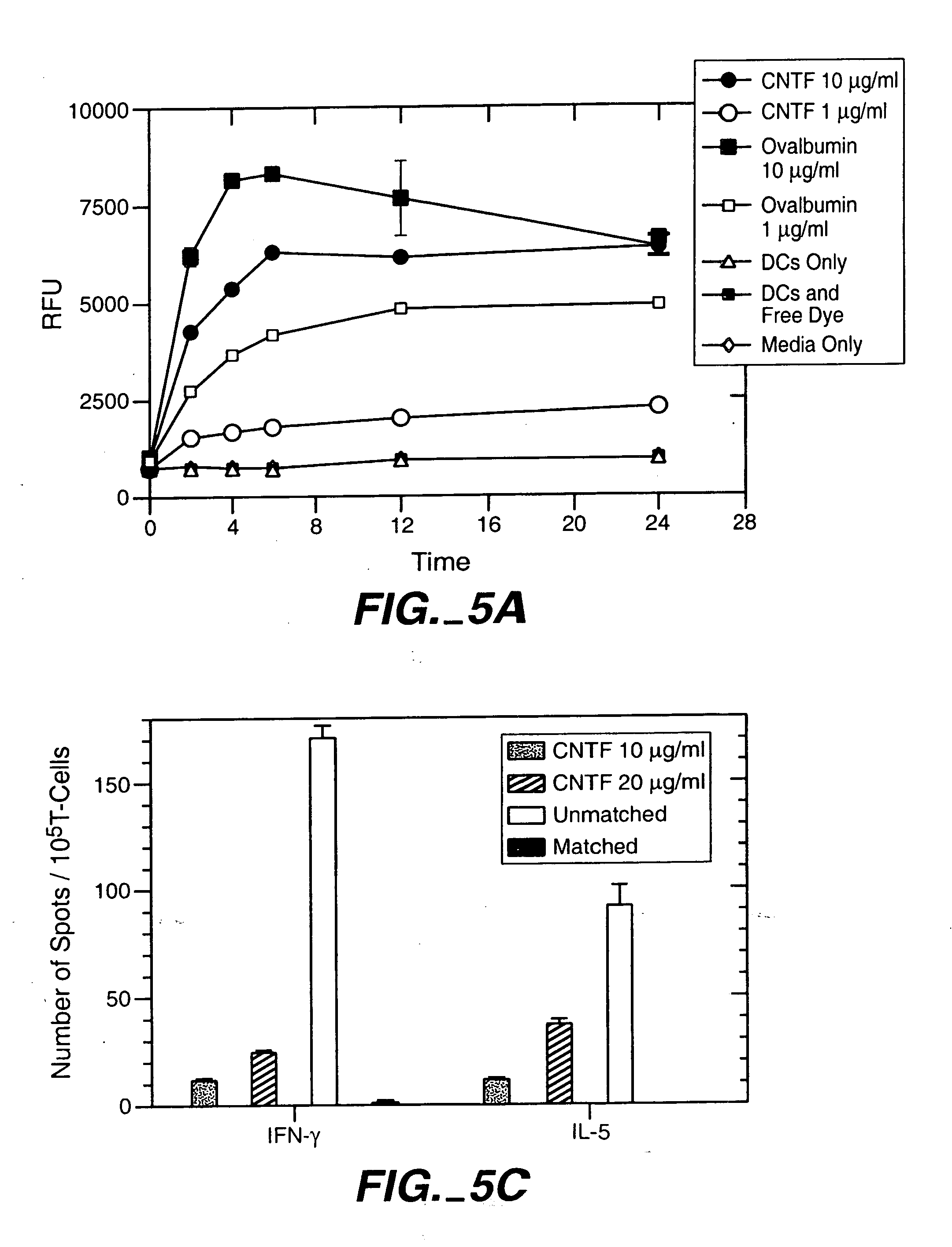Ciliary neurotrophic factor variants
a ciliary neurotrophic factor and variant technology, applied in the field of variant ciliary neurotrophic factor (cntf) proteins, can solve the problems of reducing the efficacy and safety of protein therapeutics in multiple ways, severe side effects and even death, and limiting the efficacy of protein therapeutics, so as to reduce or substantially eliminate immunogenicity, maintain weight loss and/or neuroprotective activity, effect of reducing
- Summary
- Abstract
- Description
- Claims
- Application Information
AI Technical Summary
Benefits of technology
Problems solved by technology
Method used
Image
Examples
example 1
Identification of MHC-Bindinq Epitopes in CNTF
[0092] In order to find MHC-binding epitopes, each 9-residue fragment of native human CNTF was analyzed for its propensity to bind to each of 52 class II MHC alleles for which peptide binding affinity matrices have been derived. The calculations were performed using cutoffs of 1% ,3% and 5%. The number of alleles that each peptide is predicted to bind at each of these cutoffs are shown below. 9-mer peptides that are not listed below are not any alleles at the 5%, 3%, or 1% cutoffs.
FirstLastResidueResidueSequence1% Hits3% Hits5% Hits1624LCSRSIWLA0012129IWLARKIRS05162230WLARKIRSD1232331LARKIRSDL0012735IRSDLTALT611113846YVKHQGLNK0774452LNKNINLDS0464856INLDSADGM0687785LQAYRTFHV23118088YRTFHVLLA2334378391FHVLLARLL3488593VLLARLLED023112120LLLQVAAFA015113121LLQVAAFAY022121129YQIEELMIL067126134LMILLEYKI022130138LEYKIPRNE137132140YKIPRNEAD001156164LWGLKVLQE024157165WGLKVLQEL003159167LKVLQELSQ035165173LSQWTVRSI017168176WTVRSIHDL001170178VRSIHDL...
example 2
Identification of Less Immunogenic Variants
[0095] In preferrd embodiment, each position that contributes to MHC binding is analyzed to identify a sudset of amino acid substitutions that are potentially compatible with maintaining the structure and function of the protein. This step may be performed in several ways, including PDA® calculations or visual inspection by one skilled in the art. Sequences may be generated that contain all possible combinations of amino acids that were selected for consideration at each position. Matrix method calculations can be used to determine the immunogenicity each sequence. The results can be analyzed to identify sequences that have significantly decreased immunogenicity. Additional PDA® calculations may be performed to determine which of the minimally immunogenic sequences are compatible with maintaining the structure and function of the protein.
sequenceanchor1%anchor3%anchor5%overlap1%overlap3%overlap5%YRTFHVLLA2334375922YEEFHQRLA000000YKEFHQRL...
example 3
Identification of Structured, Less Immunogenic CNTF Variants
[0097] PDA® calculations were performed to predict the energies of each of the less immunogenic variants of the major epitopes in CNTF, as well as the native sequence. The energies of the native sequences were then compared with the energies of the variants to determine which of the less immunogenic CNTF sequences are compatible with maintaining the structure and function of CNTF. Unless otherwise noted, the nine residues comprising an epitope of interest were determined to be the variable residue positions. Coordinates for the CNTF template were obtained from PDB accession code 1CNT. A variety of rotameric states were considered for each variable position, and the sequence was constrained to be the sequence of a specific less immunogenic variant identified previously. Rotamer-template and rotamer-rotamer energies were then calculated using a force field including terms describing van der Waals interactions, hydrogen bonds...
PUM
| Property | Measurement | Unit |
|---|---|---|
| Immunogenicity | aaaaa | aaaaa |
| Hydrophobicity | aaaaa | aaaaa |
| Weight loss | aaaaa | aaaaa |
Abstract
Description
Claims
Application Information
 Login to View More
Login to View More - R&D
- Intellectual Property
- Life Sciences
- Materials
- Tech Scout
- Unparalleled Data Quality
- Higher Quality Content
- 60% Fewer Hallucinations
Browse by: Latest US Patents, China's latest patents, Technical Efficacy Thesaurus, Application Domain, Technology Topic, Popular Technical Reports.
© 2025 PatSnap. All rights reserved.Legal|Privacy policy|Modern Slavery Act Transparency Statement|Sitemap|About US| Contact US: help@patsnap.com



